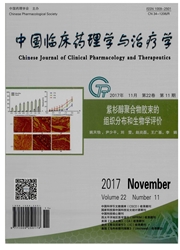

 中文摘要:
中文摘要:
阿尔茨海默病(Alzheimer's disease,AD)是一种以认知和记忆功能受损为主要特征的神经退行性疾病,严重影响老年人的生活质量。由于AD发病机制复杂,现有针对乙酰胆碱酯酶(acetylcholinesterase,ACh E)催化位点的治疗药物疗效尚不理想,多靶向配基策略(multi-target directed ligands,MTDLs)成为AD治疗药物的研发热点;随着对ACh E在AD发病机制中作用认识的深入,同时作用于双活性位点的ACh E抑制剂成为MTDLs研发的重要基础。近期报道的具有ACh E双位点抑制活性的MTDLs药物在AD治疗中可能具有良好的应用前景。本文对近3年该类药物的研发现状进行综述。
 英文摘要:
英文摘要:
Alzheimer's disease( AD) is a neurodegenerative disorder characterized by cognitive decline and memory loss, which seriously afflicts millions of people worldwide. However, available drugs targeting the catalytic site of acetylcholinesterase( ACh E) for AD therapy show limited curative effect due to the complex pathological mechanisms of AD. As a result,multi-target directed ligands( MTDLs) strategy has become a promising research area in AD therapy. Since the role of peripheral anionic site of ACh E in AD's pathological course has been identified,development of MTDLs,which are developed based on dual binding site ACh E inhibitors( ACh EIs),have been currently recognized as a promising direction in AD therapy. Recently,lots of MTDLs based on dual binding site ACh EIs have been reported. This article reviewed the development of these drugs in the latest 3years.
 同期刊论文项目
同期刊论文项目
 同项目期刊论文
同项目期刊论文
 期刊信息
期刊信息
